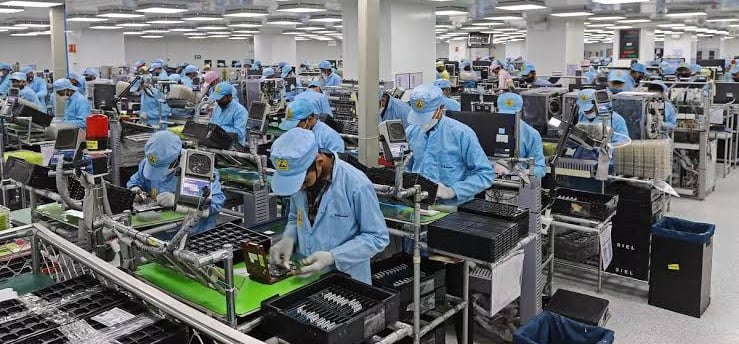Add your promotional text...
Evaluating the Sustainability of Dixon Technologies' Sky-High PE Ratio of 200
Synopsis: Dixon Technologies, a leading electronics manufacturer, is currently valued at a P/E ratio exceeding 200, raising questions about the sustainability of such a high valuation. This blog delves into the implications of this P/E ratio, examines Dixon's business models, and assesses the impact of its growth strategies and government incentives. Additionally, it explores potential challenges in maintaining growth and the effects of strategic partnerships on the company's future valuation. Investors are advised to approach with caution, considering the complex interplay of factors influencing Dixon's stock performance.
EDITORIAL
By Divyanshu Pandey
7/11/20242 min read


Understanding the Implications of a High PE Ratio
A price-to-earnings (P/E) ratio exceeding 200 times implies that an investor would theoretically need 200 years to recover their initial investment solely through the company's ongoing profits. This estimation assumes no exponential growth. However, if a company like Dixon Technologies grows significantly, the recovery period could shorten.
A Closer Look at Dixon Technologies
Dixon Technologies is a prominent manufacturer in the electronics sector, operating under two main business models:
1. Original Equipment Manufacturer (OEM): In this model, Dixon assembles products based on customer specifications.
2. Original Design Manufacturer (ODM): Here, Dixon handles the entire production process, from design to raw material selection, leveraging its in-house R&D capabilities.
Beneficiary of the China Plus One Strategy
Post-COVID, Dixon has benefited greatly from the China Plus One strategy, where global electronics companies seek alternative production hubs. Additionally, Dixon has secured significant government production-linked incentives (PLI) aimed at boosting local manufacturing.
The Market Euphoria and Valuation Concerns
The market’s excitement over Dixon’s prospects has driven its stock to an earnings multiple of 200. The critical question is whether this valuation is sustainable.
Assessing Earnings Growth and PE Multiple
Dixon Technologies has achieved nearly 40% compounded earnings growth over the past decade. Assuming this growth rate continues and the stock price remains stable, the P/E ratio would gradually decrease. With 40% annual earnings growth, the P/E multiple could align closer to Dixon’s return on equity (ROE) of approximately 26% within six years.
Challenges in Sustaining High Growth
Maintaining a 40% growth rate presents challenges. For instance, Dixon’s recent joint venture (JV) with Chinese company HKC Corporation highlights potential obstacles. This JV aims to manufacture liquid crystal modules and thin film transistor liquid crystal display modules. However, regulatory approvals, particularly under the 2020 Foreign Direct Investment (FDI) rules requiring prior government approval for entities from countries sharing land borders with India, could delay progress. Moreover, Chinese partners cannot hold majority stakes in these JVs.
Despite these hurdles, India is considering short-term visas for Chinese technicians to facilitate electronics PLI scheme projects. This initiative aims to bridge the skill gap and enhance domestic manufacturing capabilities.
The Importance of Domestic Manufacturing
India manufactures approximately US$ 11 billion worth of electronics components, while around US$ 30 billion worth of components are imported, with 37% sourced from China. Although domestic electronics production has grown 2.5 times over the past five years, value addition remains low at 15-20% due to reliance on imported critical components. India’s goal is to replicate China’s success in electronics manufacturing.
Government Incentives and Cost Competitiveness
Indian manufacturers face an 8-10% cost disadvantage compared to global competitors. Government incentives like the PLI and the Scheme for Promotion of Manufacturing of Electronic Components (SPECS) help mitigate these disadvantages. However, companies like Dixon depend heavily on these incentives to advance profitably in the manufacturing value chain.
Revisiting Earnings Growth and Valuation
If Dixon achieves a 20% annual earnings growth, it might take around 11 years for the P/E multiple to settle near 26x, matching its ROE. With a more moderate 15% growth, this period could extend to 15 years, making prolonged stock price sluggishness a concern.
Conclusion: Investor Caution Advised
While the potential China JV currently boosts Dixon’s stock, any significant bottlenecks could dampen investor enthusiasm. The electronics sector is often likened to the defense sector in the Indian stock markets, but investors must remain cautious about valuations. Sustainable growth, regulatory hurdles, and government incentives will play crucial roles in determining Dixon Technologies’ future performance.
